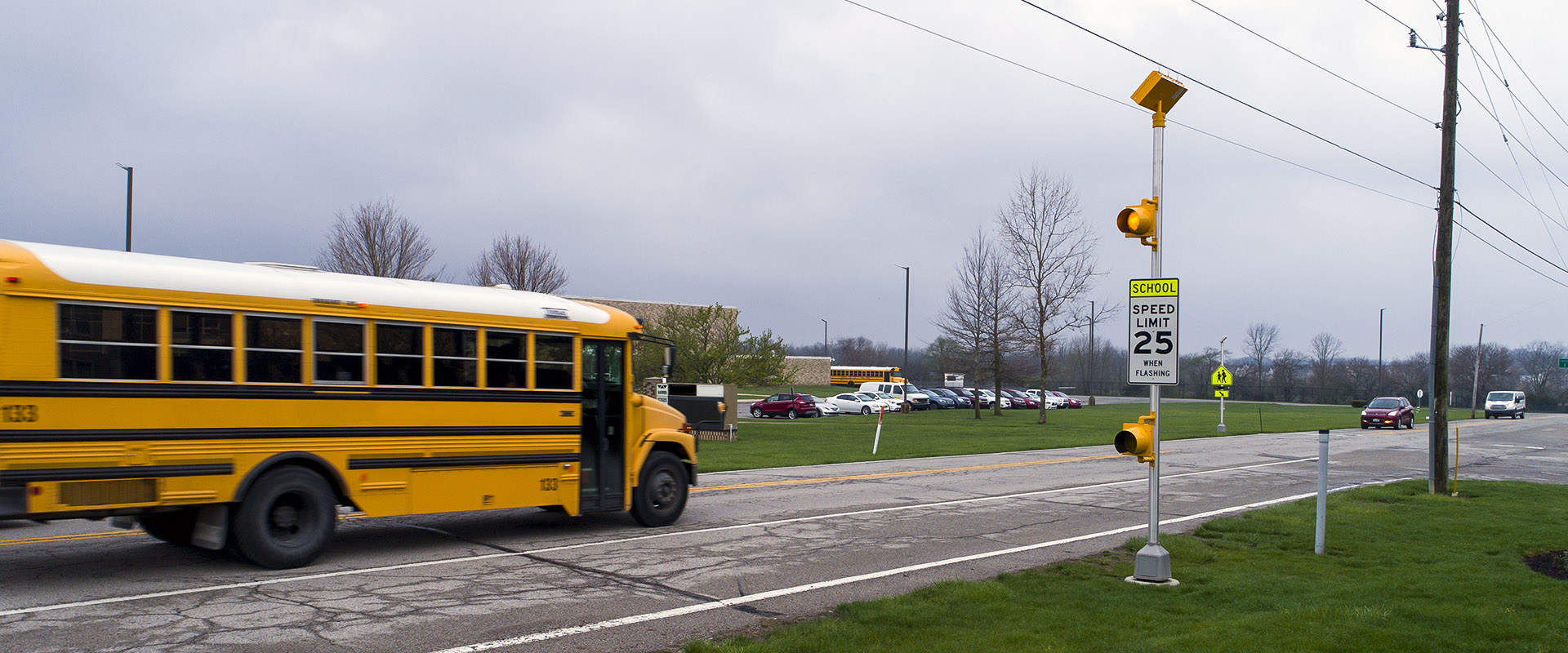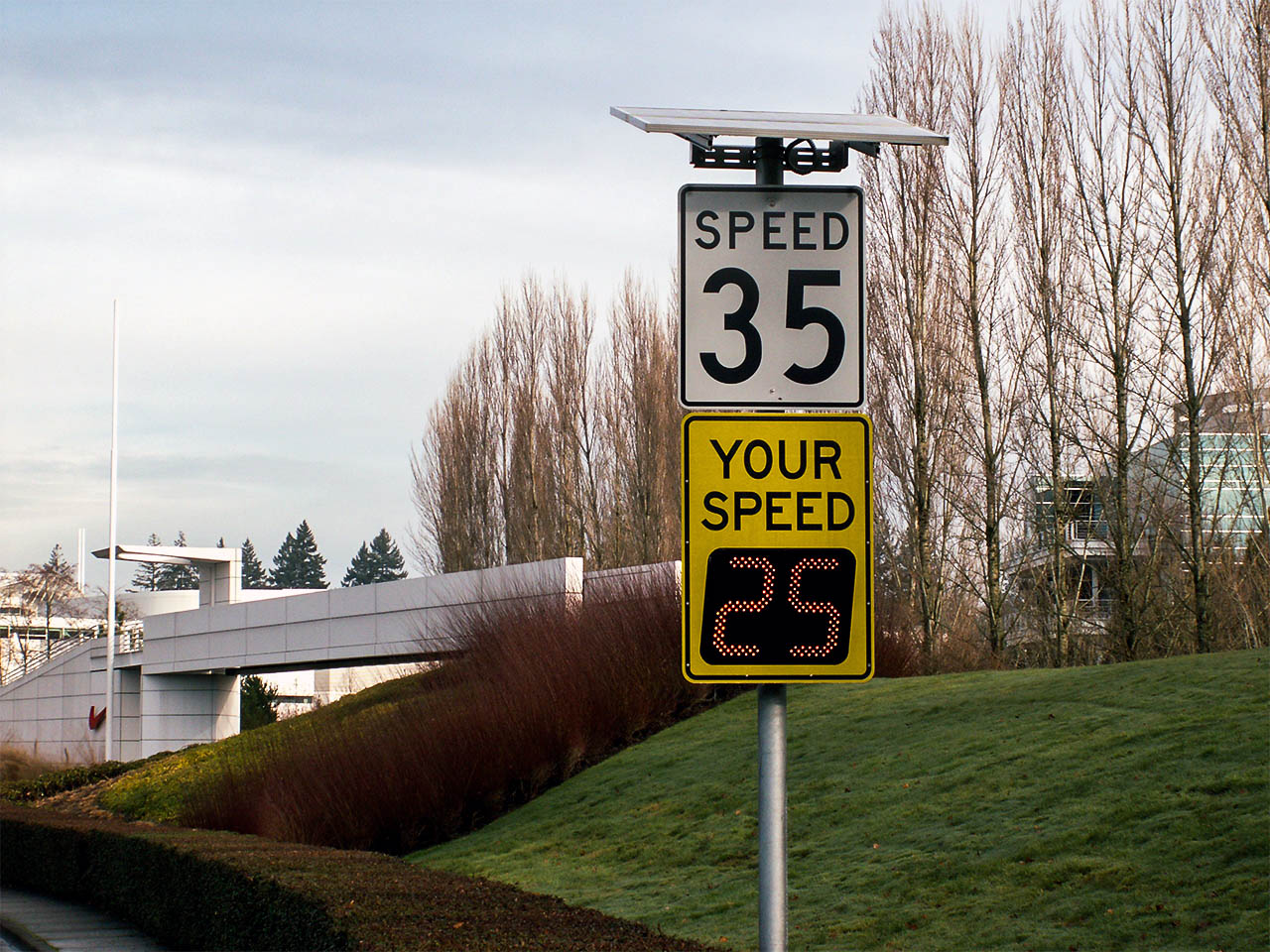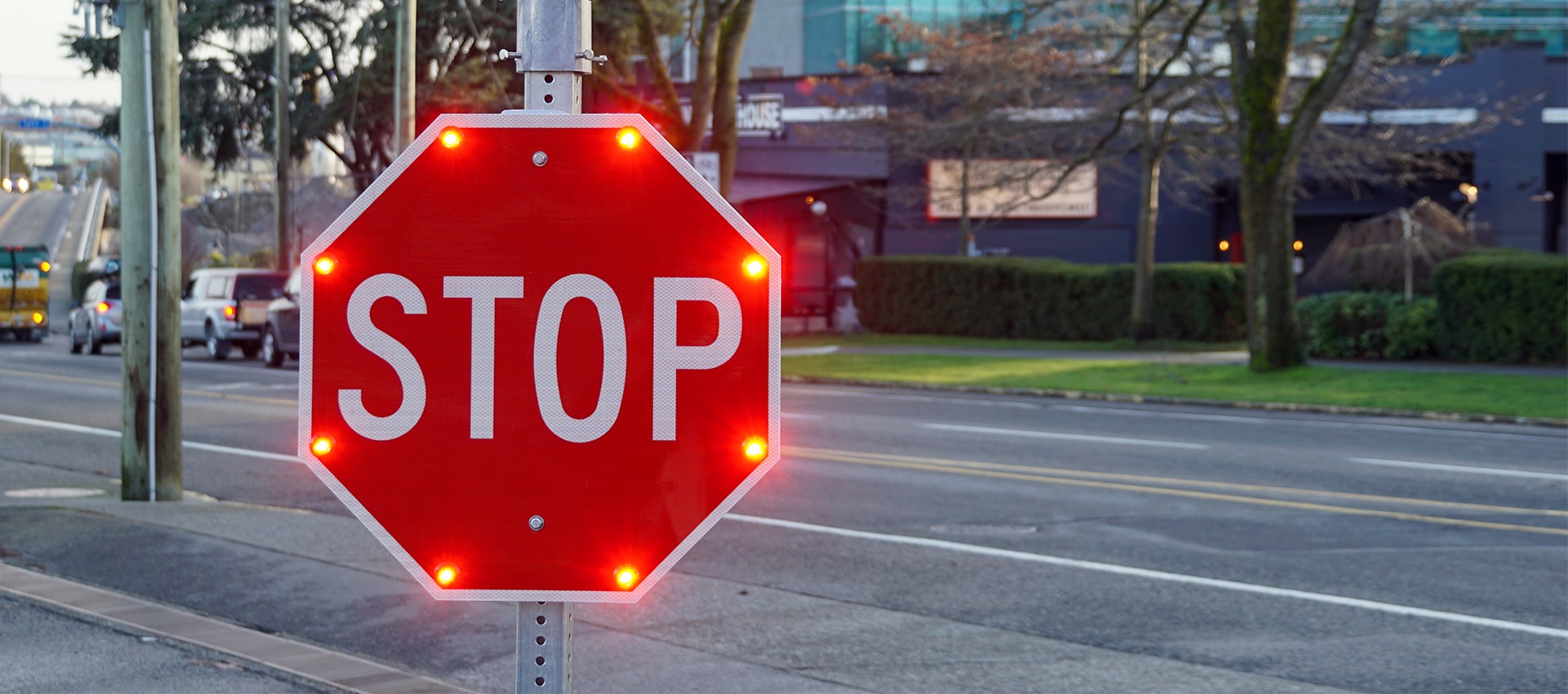Planning for School Zone Safety with Beacons and Signs
Making sure that drivers see, acknowledge, and obey school zone signs is vital to protecting young people making their way to and from school, no matter which mode of transportation they are using.
According to a Seattle Department of Transportation (DOT) report, a pedestrian hit by a vehicle traveling at 40 mph only has a 10% chance of surviving, while a pedestrian hit by a vehicle traveling at 20 mph has a 90% chance of surviving—a good reason for school zones to have 20 mph limits, especially considering that those ages 5 to 14 have the highest pedestrian crash rate of any 10-year age group.
Improving safety for pedestrians starts with improving vehicle driver compliance: educating drivers in this way can help parents feel more confident about allowing their children to walk to school, and we know that walking builds good habits, improves health and wellness, and reduces congestion in school zones, among many other benefits. Happier, healthier people can mean cost savings, better livability, and improved economics for your municipality.
The videos below explore several solutions to help vehicle drivers reduce speed, pay attention to signs, and become more compliant in school zones.
NOTE: Please keep in mind this is a general guideline only based on the FHWA’s MUTCD: your state and/or local jurisdiction may have different school zone design and sign placement standards to meet their unique safety concerns.
Click on an icon to jump to the corresponding video/section:

Help drivers identify school zones in the community
School zone signs alone may not be enough to improve driver compliance when school zone speed limits are in effect. Adding flashing school zone beacons or enhancing signs with flashing LEDs can help draw attention to signs and encourage drivers to slow down. These beacons can be programmed to flash only when the school zone speed limit is in effect, removing the guesswork for drivers unfamiliar or unaware of the local requirements.
Municipalities across North America have selected flashing beacons for improved school zone speed compliance:
- In Marion County, Indianapolis, Indiana, schools provided overwhelmingly positive feedback to their new school zone flashing beacons, which quickly began to cause a change in driver behavior.
- Rapid City, South Dakota, ran trials on two school zone beacons, which were so reliable and easy to program that the city ordered 48 more units.
- Candiac, Quebec, was a growing town with the big-city troubles of neighboring Montreal, so it chose to add LED flashing school zone beacons to enhance its commitment to pedestrian safety.
In this video, we’ll cover what school zone signs and beacons are required, where to place them, and how they can help change driver behavior (click here to see the video transcript).

Help drivers notice and stop at school zone crosswalks
Signs and road markings legally mark a crosswalk, but that might not be enough to get drivers to yield to pedestrians, especially on busy roads. Circular crosswalk beacons are one treatment, but rectangular rapid flashing beacons (RRFBs) offer driver yield rates between about 82 and 93% compliance. Their highly effective irregular flash pattern helps command driver attention in a variety of circumstances.
For example, RRFBs have helped municipalities across North America mark their crosswalks in school zones, at roundabouts, and at other mid-block locations:
- SCHOOL ZONES: In St. Albert, Alberta, the Safe Journeys to School program helped retrofit existing school zone crosswalks with RRFBs for better driver compliance.
- ROUNDABOUTS: The Five Corners Roundabout in Edmonds, Washington, is an award-winning project that turned a congested five-way intersection into an efficient roundabout complete with RRFBs at every entry point.
- MID-BLOCK: Woonsocket, Rhode Island, used a 90-day trial to test out RRFBs in two mid-block locations. After seeing the effectiveness and the ease of installation, they purchased more RRFBs for two more locations.
In this video, we’ll cover RRFB effectiveness, how the technology works to improve driver awareness, and how it can fit into a school zone safety plan (click here to see the video transcript).
To learn more about crosswalk treatments, download our RRFB applications guide below.

Help drivers slow down to the school zone speed limit
In the wake of increasing pedestrian fatalities in the US and Canada, many cities have begun adopting traffic calming programs to help slow traffic and save lives. Radar speed signs fit into these programs, helping drivers see their current speed, acknowledge they are speeding, and slow down, with no police presence required. In fact, in a study in Utah, 68.2% of drivers self-reported that radar speed signs are helpful or very helpful at informing them of their speed while driving, and 66.1% agreed or strongly agreed they are effective at causing them to slow down.
The statistics show these driver perceptions to be accurate. In a study comparing speeds before and after radar speed signs were installed at a school zone speed limit sign, the percentage of vehicles exceeding the school zone speed limit of 35 mph was reduced from 95.3% to 34.1%.
Radar speed signs are an effective solution in school zones and beyond:
- SCHOOL ZONE: An elementary school in Springfield, WA, added radar speed signs after stop signs, speed bumps, and police patrols were unable to provide the continuous safety measures that parents and teachers demanded.
- INTERSECTION: The city of Chandler, AZ, reduced driver speeds by an average of 4 mph in advance of several problem intersections throughout the city.
- SHARP CURVE: At two dangerous curves on Highway 101 in California, collisions dropped by 37% and 75% after radar speed signs, flashing beacons, and static curve warning signs were installed.
In this video, we cover the effectiveness of radar speed signs, as well as how the technology works to improve driver awareness, and how they can be part of a complete school zone safety plan (click here to see the video transcript).
To learn more about MUTCD requirements for radar speed signs, download our condensed guide below.

Help drivers focus on school signage
When a school zone intersection, blind corner, or other location is problematic, adding beacons that flash 24 hours a day to new or existing signage can help improve driver awareness. These warning sign flashing beacons heighten the visibility of signs, increasing sign compliance and safety for all road users. They have been proven to double the stop rate and even reduce crashes at stop-controlled intersections. Stop, Yield, Curve Ahead, Wrong Way, and nearly any other sign type are excellent candidates for 24-hour flashing beacons.
Here are some ways municipalities, agencies, and others have used warning flashers:
- Wyoming Department of Transportation sought a solution to reduce their high percentage of fatal vehicle incidences on rural roads, and turned to flashing “stop ahead” warning signs.
- A US Customs and Border Protection location in Texas supplemented existing signage with flashing beacons to improve driver awareness and reduce speeds at a border checkpoint area.
- Clark County Department of Public Works installed stop sign beacons to lower stop-controlled intersection blow-throughs. After installation, they reduced the number of drivers that blew through the stop signs by over 90%!